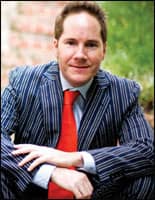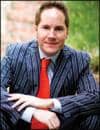
Most likely, you’re reading this not long after celebrating the Fourth of July. If you’re like most Americans, you’ve grilled some meat, you’ve oohed and aahed at some fireworks—and if you’re especially historically minded, you may have taken a moment to commemorate the signing of the Declaration of Independence. (Although, as it turns out, the quills may not have been put to the parchment until August 2, 1776, but we can discuss this later date at a later date.)
As we all know from our middle school history lessons, the Declaration of Independence proclaimed that the original 13 colonies were free of the yoke of England. But the Declaration wasn’t just a severing of ties with the old country. It brought the colonies together by formalizing their commitment to, as the Framers later wrote in the Constitution, “form a more perfect union.”
With the idea of union in mind, I’d like to take a moment to celebrate not just independence, but also interdependence. Yes, our country was founded on the notion that we should be free as a nation and as individuals, but what keeps our society working is that everyone has a role to play in helping maintain the larger whole, and that people are willing to contribute without a promise of financial gain. Without active citizens, there is no democracy.
Join the conversation by .
As it happens, there’s a sterling example of the joy of being part of a dedicated team on the cover of this very issue. Stacey J. Law, DDS, MS; Larry Morrill, DDS; and Lesley Samuels, DDS, have all been working at the Craniofacial Anomalies Clinic at Stanford University Medical Center for almost 2 decades now.
Sure, all of them have their own private practices, and volunteering their time to treat patients who cannot pay does not help these practices’ bottom lines. But to hear them tell it, being part of an interdisciplinary team with the power to transform the lives of children is well worth the lost revenue. You can find the rest of their story in our cover feature “Wednesday Warriors.”
Thanks for reading, and here’s to interdependence.
Christopher Piehler
/p>









